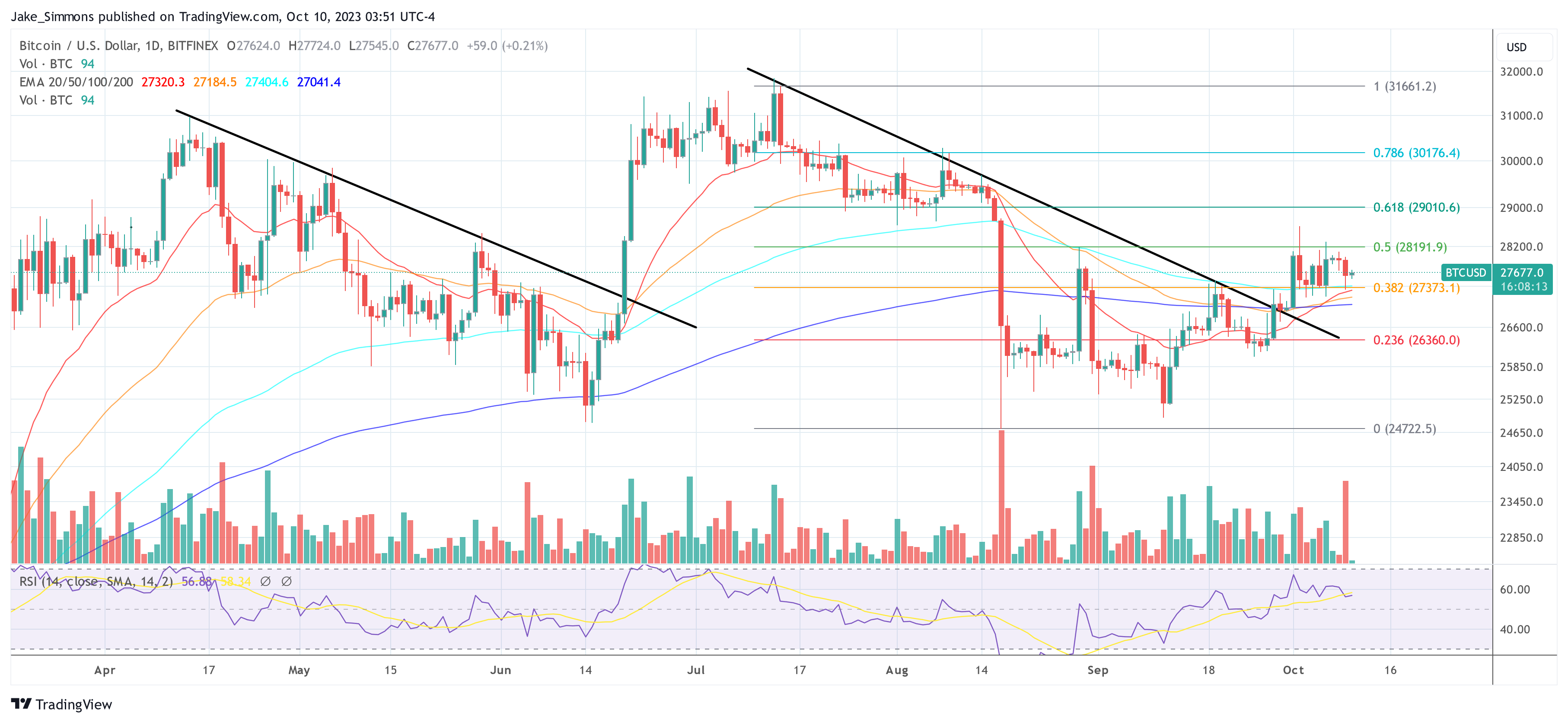The intricacies of US monetary policy have been examined by Jordi Alexander, CIO of Selini Capital, who today provided some astute insight analysis of the potential ripple effects this policy could have on the Bitcoin and crypto market. Drawing correlations between traditional financial mechanisms and the emerging digital asset landscape, his commentary illuminates a range of complex market dynamics that every investor should be aware of.
At the heart of Alexander’s argument is his observation that the Federal Reserve’s approach to dealing with current economic conditions may be approaching a turning point. As NewsBTC reports, there are growing concerns in the bond market. Bonds with maturities longer than 10 years have fallen 46% from their highest value in March 2020. Moreover, 30-year bonds have fared even worse, falling 53%.
Alexander commented: “I haven’t expressed macro views in a while – but now that things are about to really get moving – it’s time. For months I have analyzed the endgame of American policy. The result I saw is now in sight. First gradually, and then suddenly, the Feds will poop in their diapers. ”
Why QE could return sooner rather than later
The analyst sees recent shifts in the bond market, especially in long-term bonds, as a harbinger of possible policy changes. To support this, Alexander points to Nick Timiraos of the Wall Street Journal, who recently highlighted a specific sentiment from Dallas Fed President Lorie Logan that is indicative of this shift.
Logan has begun to express reservations about the Federal Open Market Committee’s (FOMC) previous hawkish stance, largely due to recent increases in Treasury yields and term premiums. Her concerns highlight the tug-of-war between the need for restrictive financial conditions to reduce inflation and the current strength of the labor market and overall economic output.
Notably, Logan believes the reasons for the tightening of financial conditions, especially those related to recent increases in Treasury yields and term premiums, could reduce the need to raise the fed funds rate.
Commenting on this reversal by the Fed’s Logan, Alexander argues: “This is the Bat-signal I’ve been waiting for. What does it mean? Why does the president of the Dallas Fed make a big baby turn in the top tweet? Because they are starting to realize that they are losing control of the bond market!”
Alexander delved deeper into the nuances of the bond market and emphasized the distinction between the front and back of the curve. He stated: “The front end of the curve, such as Treasuries and 2-year bonds, generally responds very well to the Fed’s interest rate guidance… But the Fed has never had as good control over the back end, especially at 30- year-old bonds. .” Alexander’s analysis points toward declining demand for these long-term bonds, indicating a possible loss of market control by the Federal Reserve.
This evolving bond market scenario puts the Federal Reserve in a precarious situation. Expanding on this potential dilemma, Alexander says, “What if they agree to stop raising rates or even cut spending, but bond buyers still don’t show up?” He further speculated about a possible shift – the end game – in the Federal Reserve’s approach: “Placed between a rock and a hard place, the Fed could be pushed toward yield curve control,” signaling a return to quantitative easing policies (QE).
Drawing a parallel with the Japanese financial scenario, Alexander prophesied: “The USD could very well fall victim to this policy direction, much like the Yen’s dire situation in Japan.” He then connected these macroeconomic shifts to the digital asset space, predicting: “Goodbye quantitative tightening, hello my old friend Mr. QE. The timeline is uncertain, but it’s time to start paying attention to term premiums like the Dallas Fed!”
Bitcoin and Crypto can benefit enormously
Ultimately, QE is something that Bitcoin and cryptocurrencies benefited greatly from during the last bull market. Alexander therefore also predicts “yes, your internet coins [aka Bitcoin and crypto] can then benefit.” Remarkably, this view is shared by several analysts.
BitMEX founder Arthur Hayes recently expressed a similar view, according to which the Fed will sooner or later run into trouble reintroducing QE. Hayes predicts a Bitcoin price of $750,000 in 2026.
But this perspective is not universally accepted. Coinbase’s Yuga.eth drew on Austan Goolsbee’s confidence in the FOMC’s commitment to tackling inflation. Alexander responded sharply: “Nothing about increasing debt helps inflation anyway. As I wrote at the beginning: the only way to get this right is to increase taxes, especially on corporations.”
At the time of writing, Bitcoin was trading at $26,677.

Featured image from Shutterstock, chart from TradingView.com

